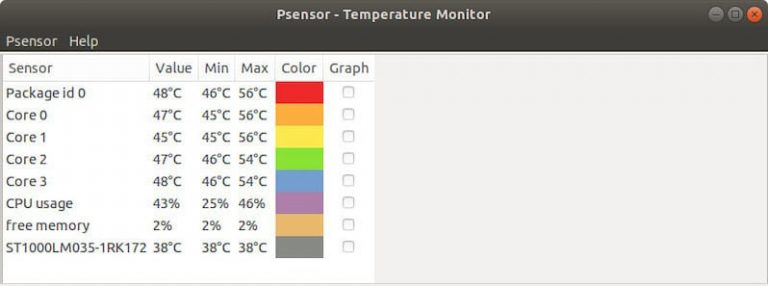
Thermal_zone_path = "/proc/acpi/thermal_zone"įor zone_name in sorted(os.listdir(thermal_zone_path)): To short-cut to the chase, Python script 'sysstats.py' uses this functionĭef get_thermal_zones(thermal_zone_path=None): MOTD is a series of scripts, which calls other scripts to put together the information. That is why the temp reported by the MOTD was noted as being higher. The Temp in lm-sensors is what it is currently. The Temp reported by the MOTD when you log in via SSH, is the highest temperature logged in the stats.

You just need to understand which temp is reported by what, and what they mean. Would you like the short summarized version or longer, detailed technical answer?īoth temperatures you are referring to (MOTD and lm-sensors) are correct. (When I installed lm-sensor I did modprobe nct6775 and then sensors-detect.)Īlso wonder, how does Ubuntus "built in" fetch the temperature? What package is used? lm-sensors say my cpu is 33c and Ubuntus "built in" says 47c. If something like this is sufficent, then you can simply write a small shellscript that tells you the CPU temp and add a "command-applet" to your MATE that starts this shell script.When I log in to my Ubuntu server with ssh it shows the temperature. Is there some way of making it detect them? This is also an issue for the same OS on the Raspberry Pi, so if you find a solution please list it here for general usage.Ĭheck the upper right corner of the screenshot of my OGST image (which also uses MATE): I believe its name is hardware sensors or similar, and it is intended to inform the user of various sensor readings, but none are detected. This applet can be installed by right-clicking the taskbar and "add". I have no way of monitoring the CPU temperature, and it can get QUITE warm during compiling.

The taskbar sensors applet does not detect any of them. I have noticed a possible problem with the Ubuntu mate desktop in 15.04 and 16.04.


 0 kommentar(er)
0 kommentar(er)
